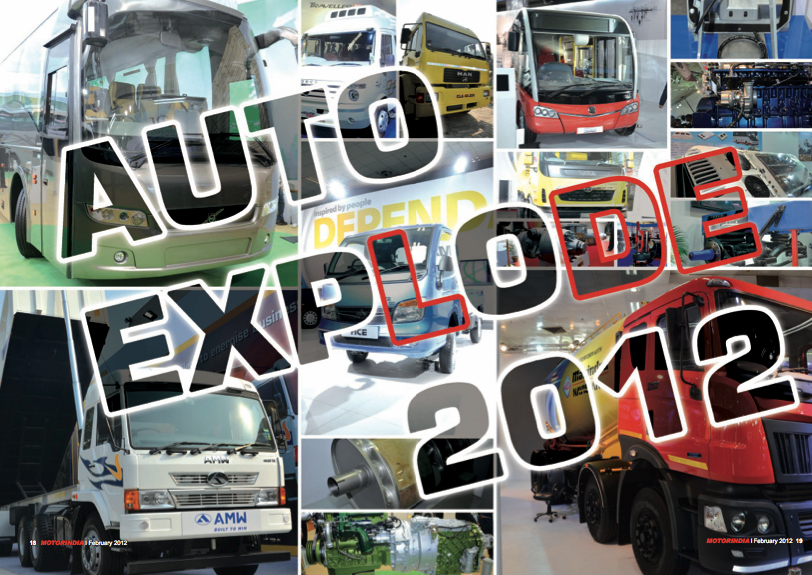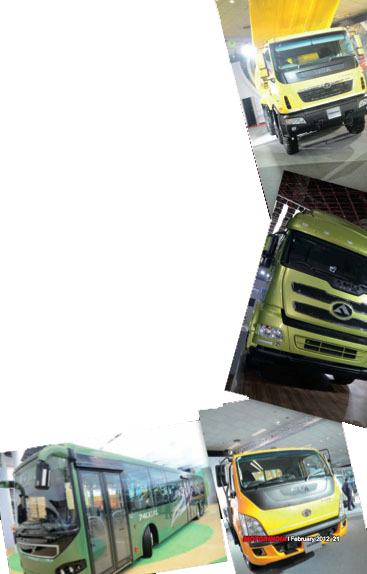 With 1,500 exhibitors from 24 countries, 58 new product launches, nine fresh concepts and 12 green vehicles, Auto Expo 2012 in New Delhi really proved a leading global automotive show, demonstrating the might of the Indian auto industry. More than seven lakh people visited the six-day event. The number would easily have crossed the million-mark had the organisers not put a freeze on ticket sales.
With 1,500 exhibitors from 24 countries, 58 new product launches, nine fresh concepts and 12 green vehicles, Auto Expo 2012 in New Delhi really proved a leading global automotive show, demonstrating the might of the Indian auto industry. More than seven lakh people visited the six-day event. The number would easily have crossed the million-mark had the organisers not put a freeze on ticket sales.
Despite shortcomings in the infrastructure and other facilities, the sheer magnitude and scale of the event and the overwhelming visitor response clearly ranked the Auto Expo among the top global auto shows. This was perhaps the last time that Auto Expo was held at Pragati Maidan in Delhi. The venue for Auto Expo 2014 will be shifted to a new world-class facility.
An important question that remains unanswered is as to how long the present format of Auto Expo would continue. On the one hand, there is the car and bike segment, and on the other the truck and bus segment. The target audience for both these segments are entirely different. Then there are component manufacturers who supply to both these segments.
Gone are the days when we had just a couple of commercial vehicle manufacturers displaying a few concept trucks and buses. Auto Expo 2012 had participation from nearly 10 Indian and global truck and bus manufacturers displaying over 50 different models, including 15 new launches. These new products launched at the expo are no more concept vehicles but are vehicles which will hit the road shortly.

 All this seems to necessitate a separate show on cars and bikes and related technologies & services, and another show on trucks and buses and the related segments. We can follow the German model with the IAA Car and Bike show in Frankfurt, followed by the IAA-Commercial Vehicle show at Hannover the next year. This pattern is most ideal for India, with scope for expansion in both the segments.
All this seems to necessitate a separate show on cars and bikes and related technologies & services, and another show on trucks and buses and the related segments. We can follow the German model with the IAA Car and Bike show in Frankfurt, followed by the IAA-Commercial Vehicle show at Hannover the next year. This pattern is most ideal for India, with scope for expansion in both the segments.
Commercial vehicle segment: The battle begins
The Indian commercial vehicle industry is now in its critical phase. From three to four at the start of this millennium, there are now more than a dozen major players in the truck and bus segment. They keep expanding their product range by making suitable portfolio changes. They are also preparing to stay on top by launching vehicles which are contemporary but at the sametime offering technology relevant to the Indian market and customers. Global players have realised the market dynamics and are developing products which are more relevant and acceptable to Indian customers. It will be interesting to watch the ongoing developments and see how the Indian truck and bus majors withstand the stiff competition from global majors, not just European and Japanese, but Chinese too.
Letís look at some of the interesting launches in the commercial vehicle segment at Auto Expo 2012. As the excitement started building up to the big event, Daimler India Commercial Vehicles (DICV) made best use of the opportunity to provide a sneak preview to the BHARATBENZ range of trucks that would be unveiled in India. The DICV management team spoke about the companyís plans for the Indian market. A big-bang launch is planned by DICV in Hyderabad in the first week of March. The company has developed a completely new range of trucks for the Indian market after an extensive study of the customer requirement. How these trucks would make a mark in the Indian CV space will be watched with interest.
Market leader Tata Motors had its complete range of trucks and buses on display, right from the 0.5-tonner IRIS to the Prima. But the important launch for Tata Motors was the new LCV platform ULTRA. The Tata Ultra range offers future ready LCV & ICV trucks, ranging from 5-tonne to 14-tonne GVW. The company also showcased Paradiso, a multi-axle, inter-city luxury bus and a 5-axle 3723 truck.
Ashok Leyland had its interesting launches at Auto Expo, including the JANBUS, a single-step, front-engine, fully flat-floor bus, which is the first of its kind in the industry. AL also launched a 5-axle 10X2 truck and the Solo, an LCV bus from the Optare range. Two new light commercial vehicles ñ Stile, a passenger carrier, and Partner, a six-tonne LCV ñ developed with Nissan, its joint venture partner for LCVs, were also displayed by Ashok Leyland.
Volvo continued to strengthen its leadership in the premium bus segment with the launch of its new model 9400 PX, a 14.5-metre luxury coach, 7400 XL, a multi-axle city bus, and the well-engineered inter-city coach 9100.
Asia Motor Works (AMW) made its entry into the luxury bus segment by unveiling its 57-seater bus, the Magnus. The new bus is 14.3-metre long with a front-engine. AMW also unveiled two new trucks, the 4928 TR tractor and 2528 TP tipper.
Man Force forayed into the bus segment by unveiling the ëAirobusí a 45-seater inter-city air-conditioned coach powered by a 220 hp diesel engine.
Mahindra Navistar (MNAL) made its presence felt with its new customised truck applications. Its line-up at the Expo included MN25 (6×4) Transit mixer, MN25 Refrigerated van, MN31 Bulker, MN31 Haulage Tipper, MN25 HD Tipper and Tourister 32-seater CRDe Bus refresh.
The US commercial-vehicle maker Paccar Inc. is reportedly exploring the possibility of introducing heavy-duty trucks in India from its Dutch unit DAF Trucks NV. The company had on display its heavy duty mining truck.
Finally, SML Isuzu displayed its LT 134 luxury bus.
There were a few players who stayed away from this yearís Auto Expo including VECV, Scania and Hino. If the organisers decide to have a separate show for Commercial Vehicles, then we can see increased participation from all other CV majors and even from application builders.

 The Indian Commercial Vehicle segment is all set for an interesting battle ahead. By the end of this decade, we might see new leaders emerge in specific segments but Indian CV manufacturers will continue to lead the industry, not just within India, but in many other global markets as well.
The Indian Commercial Vehicle segment is all set for an interesting battle ahead. By the end of this decade, we might see new leaders emerge in specific segments but Indian CV manufacturers will continue to lead the industry, not just within India, but in many other global markets as well.